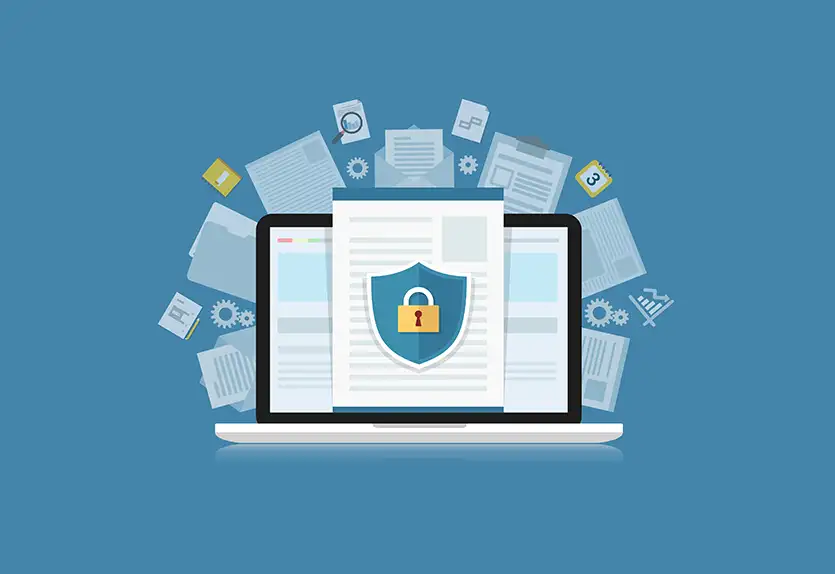Headless CMS Security: How to Fortify Your Modern Web Presence

Amanda Jones

In today's digital landscape, website security is of paramount importance. With cyber threats becoming more sophisticated, it's essential to safeguard your website and the valuable data it holds. One approach gaining traction in web development circles is the use of a headless Content Management System (CMS). In this comprehensive guide, we'll delve into the world of website security and explore how a headless CMS can bolster your defenses, ensuring that your web presence remains resilient against the ever-evolving threats in the digital realm.
The Growing Threat Landscape
Before we dive into the specifics of how a headless CMS enhances website security, let's first acknowledge the evolving threat landscape. Cyberattacks, ranging from data breaches and ransomware attacks to DDoS (Distributed Denial of Service) assaults, have become more frequent and sophisticated. These threats can have devastating consequences, including financial losses, damage to reputation, and legal ramifications.
To counter these threats effectively, organizations must adopt a proactive and layered security approach, and that's where a headless CMS comes into play.
Understanding Headless CMS
A headless CMS is a content management system that separates the content creation and storage from the presentation layer. Unlike traditional CMSs that tightly couple content management with the website's design and structure, a headless CMS provides content through APIs, allowing developers to use various front-end technologies to display the content.
Key characteristics of a headless CMS include:
- Content Agnosticism: A headless CMS stores content in a structured, agnostic format, enabling its use on different platforms and devices.
- API-First: It provides content through APIs (typically RESTful or GraphQL), allowing for easy content retrieval and manipulation programmatically.
- Front-End Flexibility: Developers have the freedom to choose front-end frameworks, making it easier to create dynamic and customized user interfaces.
- Presentation Separation: Content management is separate from the presentation layer, reducing the attack surface and enhancing security.
Now, let's explore how a headless CMS can provide website security in various aspects.
Reduced Attack Surface
A significant advantage of using a headless CMS is the reduced attack surface. In traditional CMSs, the content management system and the presentation layer are tightly integrated. This means that vulnerabilities in the CMS can potentially expose the entire web application to attacks. In contrast, a headless CMS's decoupled architecture ensures that the CMS itself is separate from the front-end presentation. Therefore, any security vulnerabilities in the CMS have a limited impact since attackers cannot directly exploit them to compromise the entire website.
Security Updates
Most headless CMS providers are acutely aware of the importance of security. They often have dedicated security teams that monitor and respond to emerging threats. As a result, these providers regularly release security updates and patches to address known vulnerabilities promptly. By using a reputable headless CMS, you can leverage their expertise in security and ensure that your content management system is fortified against the latest threats.
Access Control and Authentication
Most headless CMSs offer robust access control mechanisms and user authentication features. Content editors and administrators can be assigned specific roles and permissions, ensuring that only authorized individuals can access and modify content. This granularity of control helps prevent unauthorized changes to your website's content and structure, reducing the risk of malicious alterations or defacement.
Encryption and Data Protection
Data security is a critical aspect of website security. Most headless CMSs often employ encryption mechanisms to protect data both in transit and at rest. This ensures that sensitive content, user data, and login credentials remain confidential and secure. Additionally, reputable headless CMS providers adhere to industry standards and compliance regulations, further enhancing data protection.
Real-Time Monitoring and Alerts
Many headless CMS platforms include real-time monitoring and alerting capabilities. These features allow administrators to track unusual activities and potential security breaches in real time. By promptly detecting and responding to security incidents, you can mitigate the impact of cyberattacks and prevent data breaches.
Scalability and High Availability
Website security is not just about protecting against external threats but also ensuring uptime and availability. Headless CMSs are designed for scalability and high availability. They can distribute content globally using content delivery networks (CDNs), reducing server load and improving response times. This distribution also adds a layer of redundancy, ensuring that your website remains accessible even during traffic spikes or server failures.
Security Audits and Penetration Testing
Reputable headless CMS providers often conduct security audits and penetration testing to identify vulnerabilities and weaknesses in their systems. This proactive approach helps uncover potential security risks before attackers can exploit them. By using a CMS that undergoes regular security assessments, you benefit from a more secure platform for managing your content.
Content Versioning and Rollback
In the event of a security incident or unintended content modification, a headless CMS's versioning and rollback features can be invaluable. These features allow you to revert to previous content versions quickly, mitigating the impact of unauthorized changes and maintaining the integrity of your website.
Third-Party Integrations
Many headless CMSs support third-party integrations, which can be used to enhance security. For example, you can integrate with security monitoring tools, intrusion detection systems, and identity management solutions to further fortify your website's defenses.
How CrafterCMS Provides Ultra-High Levels of Security
As a headless CMS, CrafterCMS provides all the website security features listed above that are inherent to its API-first architecture and Git-based content platform. However, CrafterCMS incorporates several additional security features not found in other headless CMSs.
Truly Decoupled Architecture
One of the fundamental ways CrafterCMS enhances website security is through its truly decoupled architecture. Unlike many headless CMS platforms, where content authoring and content delivery are tightly integrated (and built around a single database), CrafterCMS separates these two subsystems.
CrafterCMS’s content repository and authoring tools, which house sensitive content assets and serve as the primary CMS user interface, are completed isolated from the content delivery system that delivers content experiences to site visitors. There is no physical way (via the network) a site visitor trying to hack the website can access the CMS.
This decoupling significantly reduces the attack surface of the website, even more so than typical headless CMSs that simply separate the front-end web app from the CMS via APIs.
Continuous Security Scanning
CrafterCMS is developed and maintained by a team of experts who prioritize security. They actively monitor emerging threats and promptly release security updates and patches to address known vulnerabilities. CrafterCMS follows comprehensive security processes from its community of users and developers who are constantly scanning for security vulnerabilities.
CrafterCMS security processes start with a secure development process for its own codebase, and extends to auditing of all third-party libraries, each CrafterCMS build, all downloadable machine images, auditing and securing Crafter Cloud (CrafterCMS’s private SaaS offering), and constantly mitigating the top 10 OWASP vulnerabilities.
Open Source
CrafterCMS's open-source license, distribution and governance model plays a pivotal role in enhancing its security. Open-source software benefits from a global community of developers who continually review the code, identify vulnerabilities, and contribute to security improvements. This transparent and collaborative approach ensures that security issues are addressed promptly, reducing the risk of undiscovered vulnerabilities and potential exploits. Furthermore, the open-source community encourages best practices and rigorous testing, making CrafterCMS a more robust and secure platform for content management. CrafterCMS sponsors a bug bounty program and incorporates robust and well-documented security policies and procedures as part of its open source governance model.
CVE Number Authority
CrafterCMS is proud to partner with CVE Program, the leading group of experts who identify, describe, and catalog publicly disclosed vulnerabilities. As a CVE Number Authority (CNA), CrafterCMS is authorized to assign CVE IDs to vulnerabilities and publicly disclose CVE records for its open source project in a sound, responsible manner that minimizes the threat of exploitation.
Access Control and User Permissions
Website security often starts with effective access control and user permissions. CrafterCMS provides robust access control mechanisms, allowing administrators to define granular roles and permissions for content authors, editors, publishers and administrators.
With CrafterCMS, you can control who has access to specific parts of the content management system and what actions they can perform. This ensures that only authorized individuals can access and modify content, reducing the risk of unauthorized changes, data breaches, or malicious alterations.
Encryption and Data Protection
Data security is a critical aspect of website security. CrafterCMS employs encryption mechanisms to protect data both in transit and at rest. This means that sensitive content, user data, and login credentials are encrypted, making it extremely difficult for attackers to intercept or manipulate this information.
CrafterCMS also adheres to industry standards and compliance regulations, further enhancing data protection. By using a CMS with robust encryption and data protection features, you can safeguard your website and user data from potential threats.
Private SaaS
CrafterCMS offers a SaaS version, which unlike most other SaaS headless CMS offerings, runs on private AWS cloud infrastructure that is dedicated to each customer. This means that your Crafter Cloud service is not shared with any other third party, providing extra layers of security (not to mention much higher levels of consistent performance and cost effectiveness).
Real-Time Monitoring and Alerts
CrafterCMS’s private SaaS solution includes real-time monitoring and alerting capabilities, allowing you to stay vigilant against unusual activities and potential security breaches. We also proactively perform penetration tests and other services, even integrating with your own enterprise security tools if needed. These features provide visibility into the health and security of your websites and apps running in Crafter Cloud.
By promptly detecting and responding to security incidents, we mitigate the impact of cyberattacks and prevent data breaches. CrafterCMS empowers you to proactively safeguard your website's integrity and protect your organization's reputation.
Disaster Recovery and Backup
While prevention is crucial, it's equally important to prepare for the unexpected. CrafterCMS’s private SaaS offers robust disaster recovery and backup mechanisms, ensuring that you can quickly restore your website to a secure state in case of data loss or a security breach.
Regularly backing up your content and configuration settings is a proactive measure that can save your organization from significant downtime and data loss in the event of an incident.
Summary
In an era where cyber threats continue to evolve, website security is non-negotiable. A headless CMS offers a robust defense mechanism for your web presence by reducing the attack surface, providing regular security updates, implementing access control and authentication, encrypting data, enabling real-time monitoring, ensuring scalability and high availability, conducting security audits, supporting third-party integrations, offering content versioning and rollback, and providing disaster recovery and backup solutions.
By embracing a headless CMS, you not only streamline content management but also fortify your website's defenses, safeguarding your data and ensuring a secure and resilient digital presence. And for mid- to large-scale organizations and fast growing startups that need extra layers of security, CrafterCMS provides a robust enterprise-grade headless CMS solution.
Learn more about CrafterCMS’s secure headless architecture by reading our White Paper: The World of Headless CMS: Everything You Need to Know About Headless Content Management
Related Posts

Publishing Content from Crafter Studio to External Systems and Databases

Sara Williams

Websites Are Dead?

Mike Vertal

No-Code Experience Building for Marketers & Designers

Amanda Lee

Is Your CMS MACH-Ready? A Practical Guide for Enterprise Architects

Sara Williams










